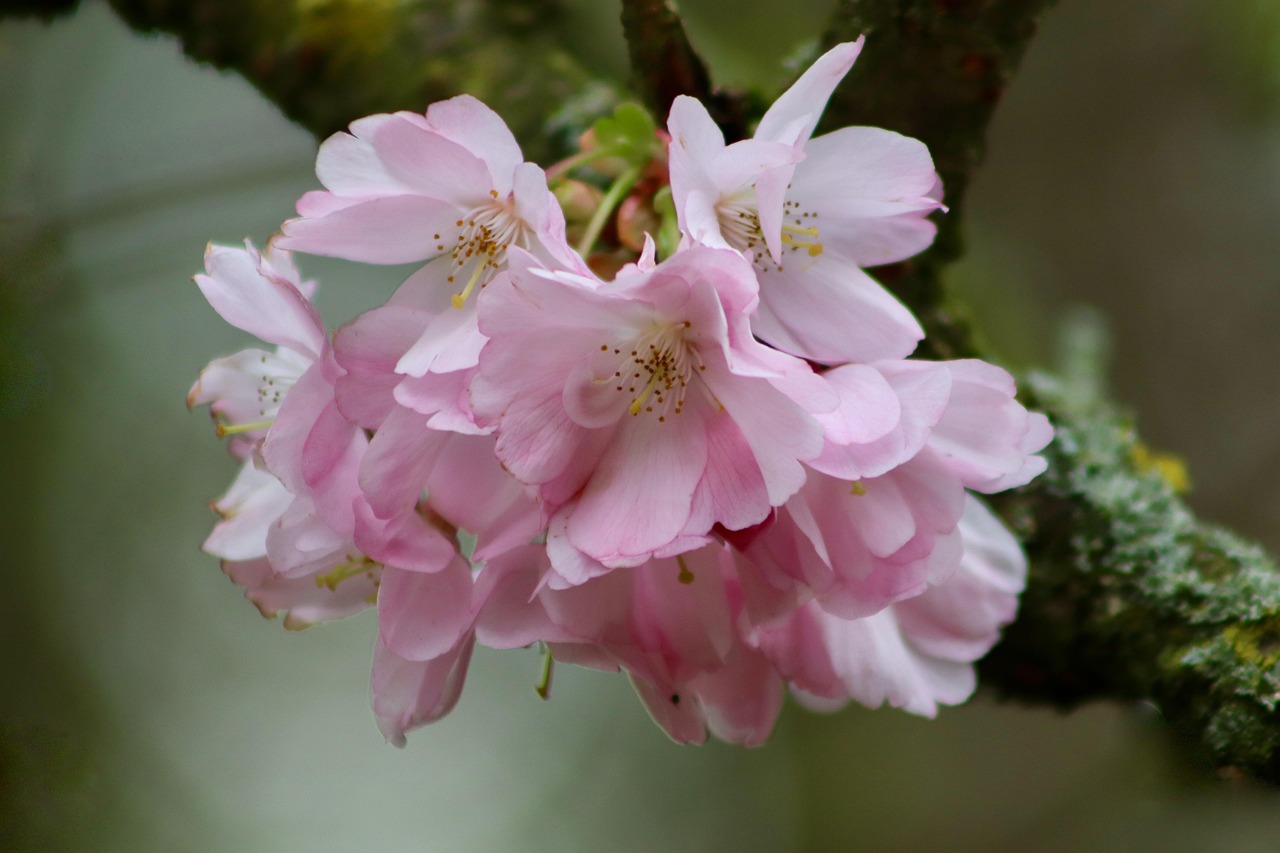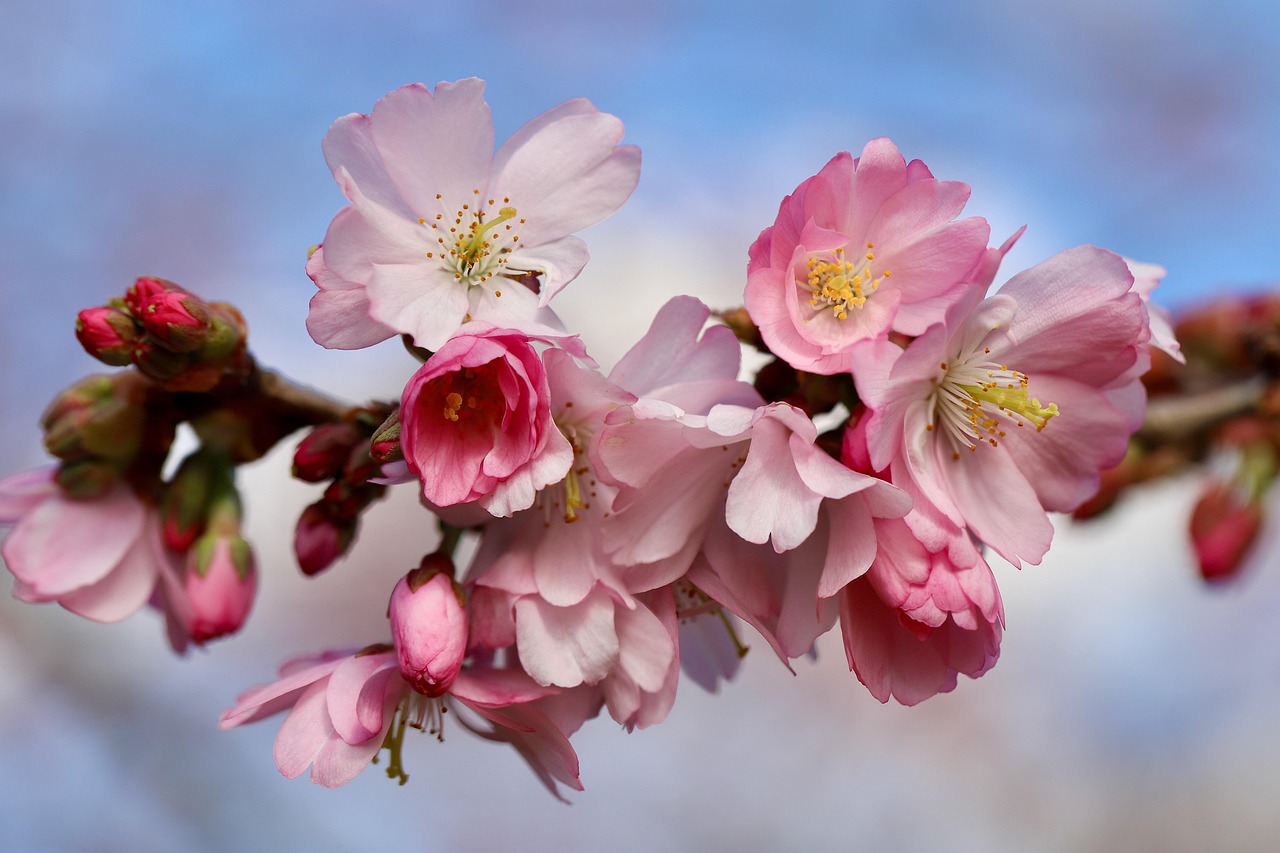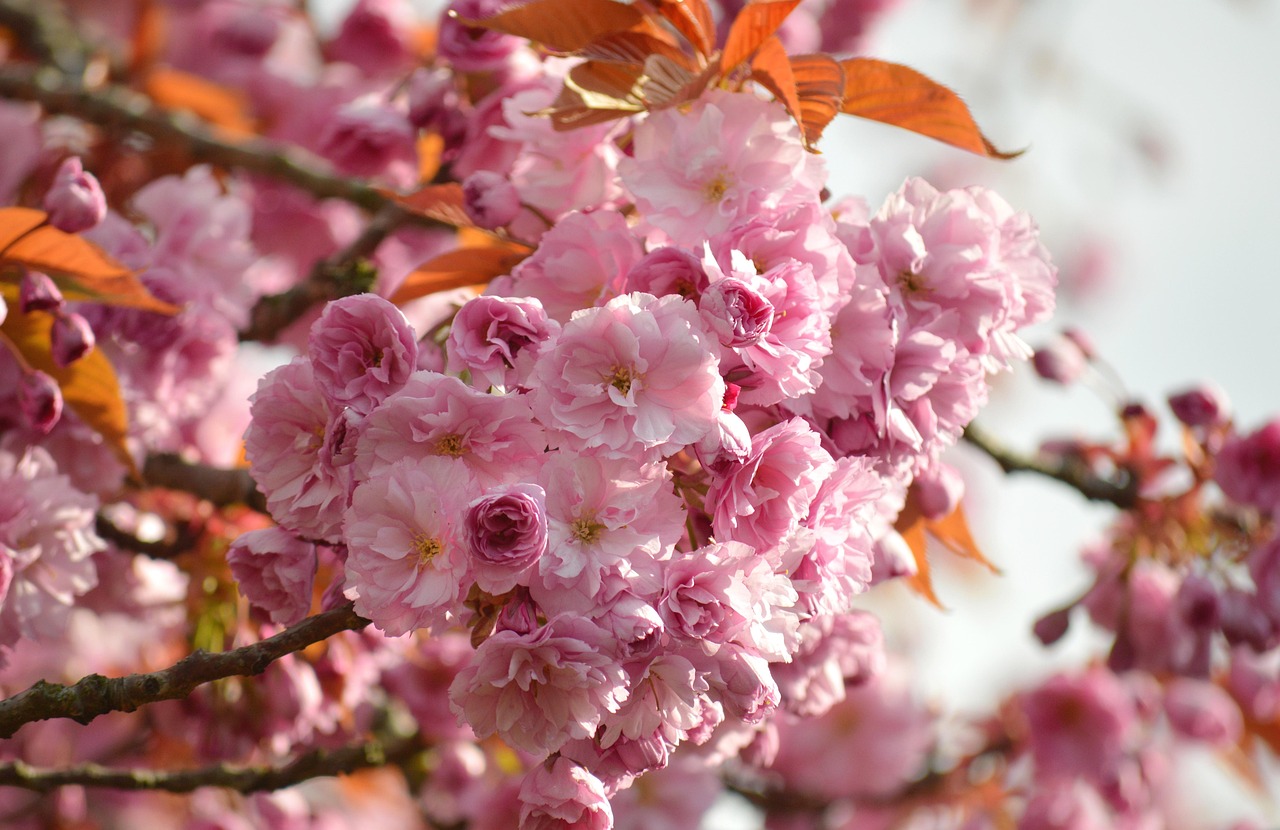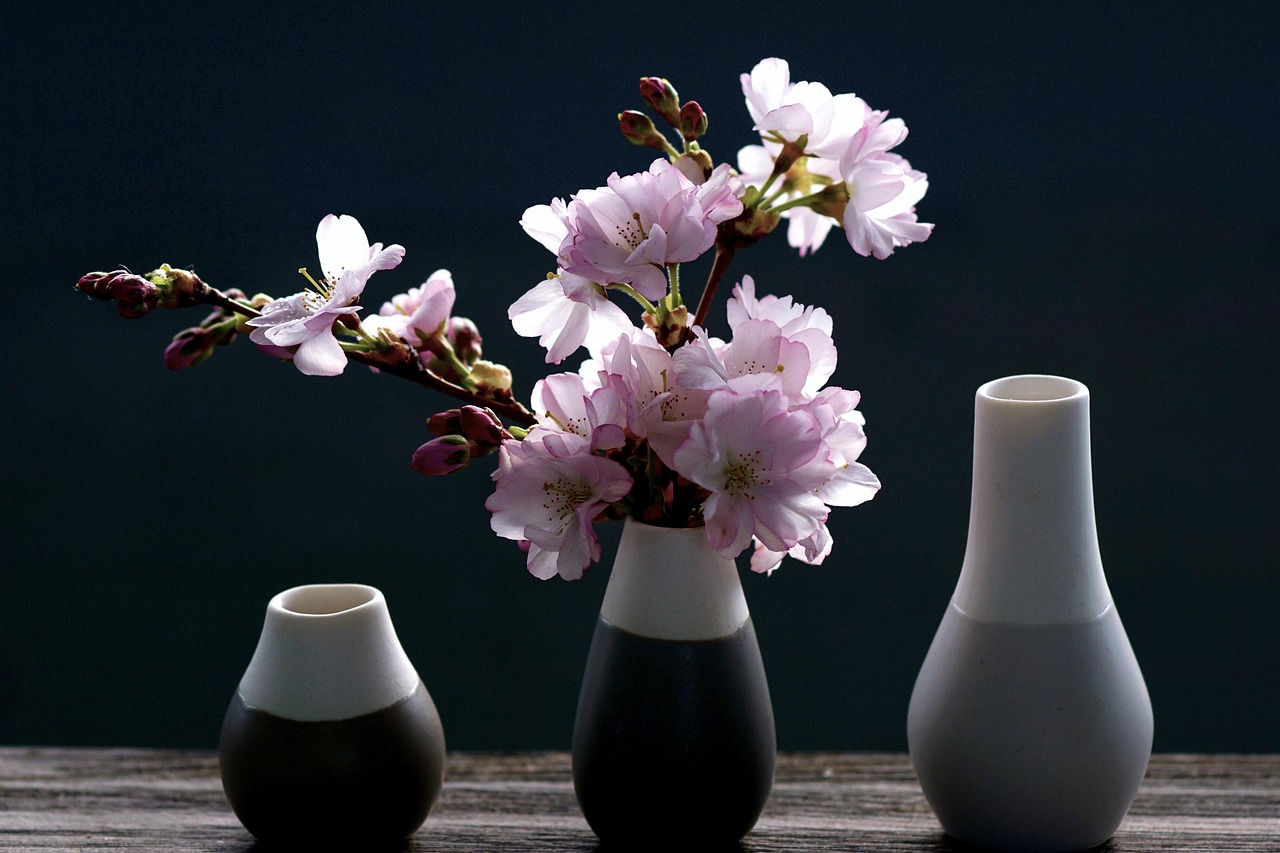Pruning Japanese cherry blossoms is essential for maintaining their health and enhancing their beauty. Proper pruning encourages vibrant blooms, shapes the tree, and promotes overall growth. Timing and technique are crucial for achieving the best festive displays.
Understanding Japanese Cherry Blossoms
Japanese cherry blossoms, known as “sakura,” are celebrated around the world for their stunning beauty. These trees bloom in early spring, creating breathtaking displays of delicate pink and white flowers. They hold cultural significance in Japan, symbolizing renewal and the fleeting nature of life. The blooms attract many visitors, making proper care and maintenance vital for optimal displays.

Pruning is a critical aspect of caring for cherry blossom trees. It not only helps maintain their shape but also promotes healthy growth and prolific blooming. Knowing when and how to prune these trees can make a significant difference in their appearance and health.
The Importance of Pruning
Pruning serves several vital purposes for Japanese cherry blossoms:
- Enhances air circulation within the tree
- Removes dead or diseased branches
- Encourages new growth for more blooms
- Shapes the tree for aesthetic appeal
Regular pruning can prevent problems associated with overcrowding, such as poor air circulation and increased susceptibility to pests and diseases. By removing unnecessary branches, the tree can focus its energy on producing beautiful flowers.

Best Time to Prune
Timing is crucial when it comes to pruning Japanese cherry blossoms. The ideal period for pruning is late winter to early spring, just before the tree begins to bloom. This timing allows for any cuts made to heal properly before the flower buds emerge. Pruning during this time also encourages vigorous new growth as the tree enters its active growing season.
It is important to avoid pruning in late summer or fall. Pruning during these times can remove buds that would produce blossoms in the following spring. Additionally, late-season pruning can expose the tree to harsh winter conditions, leading to potential damage.
Tools Needed for Pruning
Using the right tools is essential for effective pruning. Here are some common tools that can help:

| Tool | Description |
|---|---|
| Hand Pruners | Perfect for small branches and precise cuts. |
| Loppers | Used for thicker branches that require more leverage. |
| Saw | A pruning saw may be necessary for larger limbs. |
| Gloves | Protect hands from thorns and sharp edges. |
| Safety Goggles | Ensure eye protection while cutting branches. |
Having these tools ready will make the pruning process smoother and safer. It is important to ensure that all tools are clean and sharp, as this will help make clean cuts that promote healing.
Pruning Techniques
When pruning Japanese cherry blossoms, there are several techniques to consider:
- Thinning: Remove some branches to allow more light and air into the center of the tree.
- Shaping: Trim branches to create a balanced shape that enhances the tree’s natural form.
- Deadheading: Remove spent flowers after blooming to encourage new growth.
- Crown Reduction: If the tree is getting too tall, reduce its height by cutting back the tallest branches.
Each technique serves a specific purpose and should be used thoughtfully. It is essential to step back periodically during pruning to assess the overall shape of the tree and ensure a balanced appearance.

Caring for Your Pruned Tree
After pruning, caring for your cherry blossom tree is crucial. Ensure that it receives adequate water during dry spells, especially as new growth emerges. Mulching around the base of the tree can help retain moisture and suppress weeds. Monitoring for pests and diseases is also essential, as any stress from pruning can make the tree more susceptible to infestations.
In summary, proper pruning techniques and timings are vital for maintaining the health and beauty of Japanese cherry blossoms. With attentive care, these trees can provide stunning displays year after year.
Signs of a Healthy Cherry Blossom Tree
Recognizing the signs of a healthy Japanese cherry blossom tree is essential for effective care and maintenance. A robust tree will exhibit specific characteristics that indicate it is thriving. Here are some key signs to look for:
- Vibrant Leaves: Healthy leaves should be rich in color and free from discoloration or spots.
- Abundant Blooms: A healthy tree produces numerous flowers during the blooming season.
- Strong Structure: The branches should be sturdy and well-formed, supporting the tree’s overall shape.
- Minimal Pests: A lack of pest infestations indicates good health and effective care practices.
If you notice any signs of distress, it may be time to assess the tree’s care routine. Regular observation can help catch potential problems early, ensuring that your cherry blossoms remain in peak condition.
Pest and Disease Management
Japanese cherry blossoms can be susceptible to various pests and diseases. Understanding how to identify and manage these issues is crucial for maintaining healthy trees. Some common pests include:
- Aphids: Small, soft-bodied insects that can distort leaves and stunt growth.
- Cherry Fruit Flies: These pests lay eggs in the fruit, causing damage and loss.
- Spider Mites: Tiny arachnids that can weaken the tree by sucking sap from the leaves.
In addition to pests, cherry blossom trees may face diseases such as:
- Powdery Mildew: A fungal infection that causes a white powdery substance on leaves.
- Canker Diseases: These can result in dieback of branches and overall tree decline.
- Leaf Spot: Fungal or bacterial infections that create brown spots on the leaves.
Preventive Measures
Prevention is always better than treatment when it comes to pests and diseases. Here are some effective preventive measures:
- Regular Inspections: Check your tree regularly for signs of pests or diseases.
- Healthy Soil: Ensure well-draining soil enriched with organic matter to promote healthy roots.
- Proper Watering: Avoid overwatering, which can lead to root rot and other issues.
- Natural Predators: Encourage beneficial insects like ladybugs and lacewings that prey on harmful pests.
Treating Infestations
If infestations or diseases occur, take immediate action. Here are some treatment options:
- Natural Insecticides: Use neem oil or insecticidal soap to manage pests without harming beneficial insects.
- Cultural Controls: Remove infected leaves or branches to prevent the spread of disease.
- Fungicides: Apply appropriate fungicides for managing fungal infections, following all label instructions.
The Role of Fertilization
Fertilization plays a significant role in the health and blooming of Japanese cherry blossoms. Providing adequate nutrients can enhance growth and flowering. Here are key points regarding fertilization:
Choosing the Right Fertilizer
Selecting the right fertilizer is essential for cherry blossom trees. Look for a balanced fertilizer with equal parts nitrogen, phosphorus, and potassium (NPK). A ratio like 10-10-10 is often suitable. Organic options like compost or well-rotted manure also provide nutrients while improving soil structure.
Timing of Fertilization
The best time to fertilize cherry blossom trees is in early spring as they begin to wake from dormancy. This timing allows the tree to utilize the nutrients during its active growth phase. Avoid fertilizing in late fall, as this can encourage new growth that may not survive winter conditions.
Application Methods
Fertilizer can be applied in several ways:
- Granular Fertilizer: Spread evenly around the base of the tree, avoiding direct contact with the trunk.
- Liquid Fertilizer: Dilute according to package instructions and apply using a watering can or garden sprayer.
Watering after application helps the nutrients soak into the soil effectively, reaching the roots where they are needed most.
The Best Varieties for Pruning
Selecting the right variety of Japanese cherry blossom can also affect pruning outcomes. There are many cultivars available, each with unique characteristics. Here are a few popular varieties:
| Variety | Description |
|---|---|
| Yoshino Cherry (Prunus x yedoensis) | A fast-growing tree known for its stunning white flowers and graceful form. |
| Kwanzan Cherry (Prunus serrulata ‘Kwanzan’) | This variety features double pink flowers and a broad canopy, excellent for shade. |
| Sargent Cherry (Prunus sargentii) | A hardy tree with vibrant pink flowers and strong resistance to pests. |
Choosing a variety suited to your climate and space can enhance your landscaping while simplifying maintenance efforts. Each variety has its own unique beauty, making them desirable additions to any garden or park.
Seasonal Care for Cherry Blossom Trees
Cherry blossom trees require specific care throughout the seasons to ensure they thrive and produce stunning blooms. Understanding the needs of these trees during different times of the year can help maintain their health and beauty.
Spring Care
Spring is the most crucial season for cherry blossom trees as this is when they bloom. Here are some essential care tips:
- Pruning: As discussed earlier, prune in late winter to early spring before blooming begins. This helps shape the tree and promote flowering.
- Fertilization: Apply a balanced fertilizer in early spring to support new growth and blooming.
- Watering: Ensure the tree receives adequate moisture, especially during dry spells as the flowers and leaves emerge.
- Pest Monitoring: Regularly check for pests that may appear as the weather warms up. Early intervention is critical.
Summer Care
During the summer months, cherry blossom trees require ongoing attention to ensure they remain healthy:
- Watering: Continue to water regularly, especially during prolonged dry periods. Deep watering is preferable to encourage deep root growth.
- Mulching: Apply mulch around the base to retain moisture and suppress weeds. This will also help regulate soil temperature.
- Pest Control: Remain vigilant for any signs of pest infestations or diseases, as summer can be a peak time for these issues.
Fall Care
As fall approaches, preparations for winter become essential:
- Watering: Reduce watering as temperatures cool, but continue to water if there are extended dry spells.
- Leaf Removal: Rake fallen leaves to prevent fungal diseases and pests from overwintering in your garden.
- Fertilization: A light application of fertilizer can be beneficial in early fall, providing nutrients before dormancy.
Winter Care
Winter can be harsh on cherry blossom trees. Proper care during this season can protect them from damage:
- Protection from Ice and Snow: If heavy snow or ice is expected, gently shake branches to prevent breakage. Avoid using salt on pathways near trees, as it can harm roots.
- Wrap Young Trees: Consider wrapping young trees with burlap or protective coverings to shield them from extreme cold temperatures.
- Pest Inspection: Inspect for any winter pests that may have settled in. Address any issues promptly.
Enhancing Bloom Displays
Cultivating beautiful displays of cherry blossoms goes beyond just pruning and basic care. There are various techniques and practices to enhance flowering and overall aesthetics:
Companion Planting
Companion planting can significantly enhance the growth and blooming of cherry blossoms. Here are a few plants that work well alongside:
- Daffodils: Their early spring blooms complement cherry blossoms beautifully.
- Hostas: These shade-loving plants provide lush foliage that contrasts nicely with the delicate flowers.
- Lavender: This fragrant herb can attract beneficial insects while providing a stunning visual contrast.
Creating Visual Interest
Incorporating design elements around cherry blossom trees can enhance their visual appeal:
- Pathways: Create pathways leading to the trees using stones or gravel, guiding visitors through blooming displays.
- Lighting: Install soft landscape lighting to highlight the trees at night, making them a focal point even after sunset.
- Sculptures or Art Installations: Adding art pieces nearby can create a unique ambiance and attract more visitors during bloom season.
Understanding Bloom Phases
The blooming phases of cherry blossoms vary by variety and climate. Understanding these phases can help you plan for optimal displays:
| Phase | Description |
|---|---|
| Budding | The tree begins to form flower buds, which can be identified as small green formations on branches. |
| Blooming | The buds open, revealing flowers. This phase typically lasts about one to two weeks. |
| Petal Fall | The flowers drop their petals, creating a beautiful carpet of blooms beneath the tree. |
| Leaf Emergence | After blooming, new leaves appear, providing lush greenery throughout the growing season. |
By understanding these phases, you can better plan for events or celebrations around the peak bloom time, maximizing the visual impact of your cherry blossom trees.
Cultural Significance of Cherry Blossoms
The cultural significance of cherry blossoms extends beyond their beauty. In Japan, they symbolize the transient nature of life, reflecting both beauty and mortality. Festivals celebrating these blooms, known as “hanami,” are cherished traditions where families and friends gather under the trees to appreciate their fleeting beauty.
The celebration often includes picnics, music, and festivities, making it a vibrant cultural event. Understanding this significance can deepen one’s appreciation for these magnificent trees and encourage more thoughtful care and maintenance practices.
Caring for Japanese cherry blossoms is not just about horticulture; it’s about participating in a tradition that honors beauty, life, and connection with nature. By implementing effective pruning techniques and seasonal care practices, you can contribute to creating stunning displays that can be enjoyed by all.
Enhancing Your Pruning Skills
To become proficient in pruning Japanese cherry blossoms, continuous learning and practice are essential. Engaging with local horticultural societies or attending workshops can provide valuable hands-on experience. These opportunities allow you to observe expert techniques and ask questions in real-time, enhancing your understanding of specific pruning practices.
Additionally, reading books and articles on horticulture, particularly those focused on fruit trees and flowering ornamentals, can broaden your knowledge base. Understanding the biology of cherry blossom trees will help you make informed decisions regarding pruning timing, techniques, and care. Here are some suggestions for resources:
- Books: Look for titles specifically focused on cherry blossoms or ornamental trees.
- Online Courses: Many universities and gardening organizations offer courses on tree care and pruning.
- Gardening Clubs: Joining a local gardening club can connect you with fellow enthusiasts and experts.
Common Mistakes in Pruning
Even experienced gardeners can make mistakes when it comes to pruning cherry blossoms. Being aware of common pitfalls can help you avoid them:
- Pruning at the Wrong Time: Pruning too late in the season can remove buds that would produce blooms in spring.
- Over-Pruning: Removing too many branches can harm a tree’s structure and reduce flowering potential.
- Poor Cuts: Making jagged cuts or leaving stubs can lead to disease and poor healing.
- Ignoring Tree Health: Focusing solely on aesthetics without considering the tree’s health can lead to long-term problems.
Future Trends in Cherry Blossom Cultivation
The popularity of cherry blossoms continues to grow globally, leading to innovative practices in their cultivation and care. Here are some trends to watch for:
- Climate Adaptation: As climate change affects growing conditions, gardeners are experimenting with varieties that thrive in changing climates.
- Sustainable Practices: Organic gardening methods are increasingly popular, emphasizing natural pest control and organic fertilizers.
- Urban Gardening: As urban spaces become greener, cherry blossoms are being incorporated into city landscapes, providing beauty in densely populated areas.
These trends reflect a growing appreciation for the beauty and cultural significance of cherry blossoms, encouraging more people to engage in their care and celebration.
Conclusion
Pruning Japanese cherry blossoms is a rewarding endeavor that requires knowledge, timing, and skill. By understanding the importance of proper pruning techniques and seasonal care, you can ensure your trees remain healthy and vibrant. Regular maintenance not only enhances the beauty of these magnificent trees but also contributes to a deeper connection with nature.
The cultural significance of cherry blossoms reminds us of life’s fleeting beauty. Embracing this tradition through thoughtful care and maintenance allows us to celebrate the blooms each spring. As you continue your journey in cultivating these stunning trees, remember that your efforts contribute to the beauty of your surroundings and the joy they bring to others.
Ultimately, whether you are a seasoned gardener or just starting out, the knowledge gained from caring for cherry blossoms can lead to fulfilling experiences. Enjoy the process, learn from your practices, and share your love for these beautiful trees with your community.
